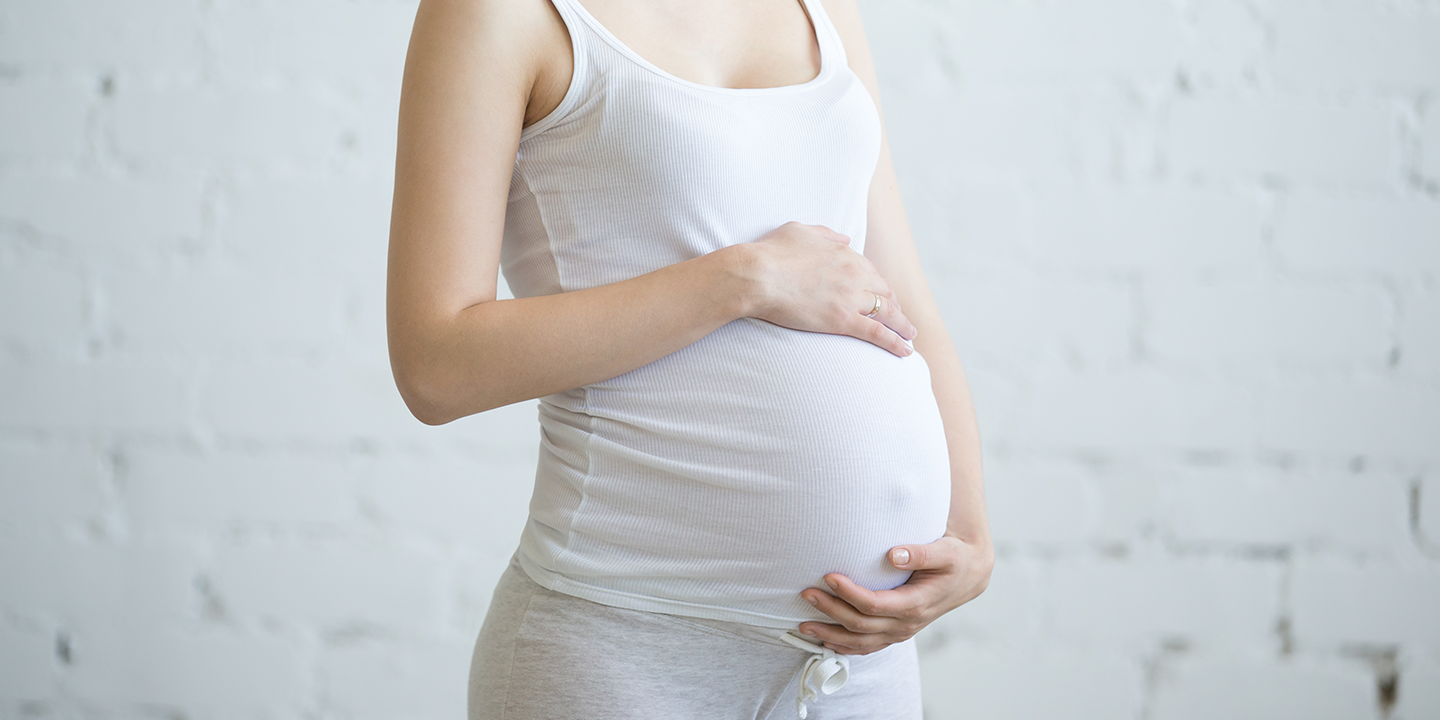
Congratulations on reaching the official commencement of the third trimester!
While it’s possible that you might not always be in a celebratory mood, especially if you’re experiencing typical week 28 symptoms such as back pain and sciatica, it is our hope that you’re still managing to find comfort as you enter the seventh month of pregnancy.
Baby’s development continues to progress rapidly, acquiring new abilities each day. At this stage, they have gained the remarkable skills of blinking and even engaging in the captivating realm of dreams.
To know more about 28 weeks of pregnant baby development, symptoms and tips, continue reading.
In this Article
28 Week Pregnant – Baby Development
Your baby is now about the size of a diaper bag, measuring approximately 14.8 inches from head to toe and weighing around 2.2 pounds.
This week marks a period of rapid brain growth for your baby. Their brain tissue develops the characteristic ridges and furrows, forming the grooved and folded appearance of the brain.
Although babies start having eye movements as early as 14 weeks, these movements increase in frequency around 28 weeks.
The higher occurrence of eye movements is associated with REM sleep and supports healthy brain development.
At 28 weeks, shining a bright light on your abdomen may cause him to open his eyes and turn away from the light.
The 28th week is crucial for your baby’s lung development. When he takes his first breath, his lungs will deliver oxygen to the blood vessels, supporting circulation throughout his body.
Surfactant production prevents air sacs from sticking together, allowing proper breathing after birth. Bronchial tubes are maturing, forming smaller branches.
Related Blog: 27 Week Pregnant: Symptoms, Tips and Baby Development
28 Weeks Pregnant Is How Many Months?
At 28 weeks pregnant, you have reached a significant milestone as you are now in the third trimester of pregnancy. This means you are approximately seven months along in your journey to welcoming your baby into the world. The countdown to meeting your little one continues as your pregnancy progresses.
28 Weeks Pregnant Bump
At 28 weeks pregnant, your baby bump is likely more noticeable as your baby continues to grow. On average, your uterus is about 2.75 inches (7 cm) above your belly button. You may have gained around 17-24 pounds (7.7-10.9 kg) so far, but it’s important to remember that weight gain can vary for each individual. Embrace your changing shape as your body nurtures and prepares for your baby.
Related Blog: 8 Surprising Things Unborn Babies Usually Do In The Womb
Symptoms
- Trouble sleeping
Hormones or nerves may cause difficulty sleeping as your due date approaches, leaving you feeling tired.
- Shortness of breath
Your growing baby crowds your lungs and diaphragm, making it harder to breathe. Take breaks and don’t overexert yourself.
- Aches and pains
Hormone fluctuations and the strain of pregnancy can cause discomfort. Stay active with gentle exercises, try a support belt, and consider massages for relief.
- Braxton Hicks contractions
Practice contractions may become stronger, more noticeable, or more frequent. Monitor them and seek medical attention if they become regular and closer together.
- Leaky boobs
Your breasts may produce colostrum, and some leakage may occur before your baby is born.
- Bloating and gas
It’s common to experience bloating and gas during pregnancy, especially as your growing uterus puts pressure on your digestive system.
- Faintness or dizziness
The increased blood volume and hormonal changes during pregnancy can sometimes lead to episodes of faintness or dizziness.
- Symphysis pubis dysfunction (SPD)
It is a condition characterised by discomfort or pain in the pelvic region. It occurs when the ligaments that normally keep the pelvic bone aligned become relaxed and stretch.
Related Blog: 26 Week Pregnant: Symptoms, Tips, and Baby Development
28 Weeks Pregnant – Tips to Follow
Apply cream or lotion to soothe and moisturise itchy skin during pregnancy.
Choose comfortable flat shoes over heels to reduce the risk of tripping and falling.
Stay updated with expert advice on your baby’s development and ensure well-being throughout your pregnancy.
Decide on a supportive person, such as a doula, to be present during labour and provide assistance.
Explore how to find a doula who can offer guidance and support during pregnancy and labour.
Find out if you’re Rh positive or Rh negative. This information is crucial to understand potential complications if you’re Rh negative and the baby is Rh positive.
Boost your iron levels by consuming iron-rich foods like chicken, beans, spinach, tofu, beef, and enriched cereals.
Ensure you receive the Tdap vaccine during pregnancy to protect your baby against whooping cough.
Research and enrol in a childbirth class that suits your needs.
Plan a tour of the hospital or birthing centre where you’ll deliver your baby.
At 28 weeks pregnant, continue daily fetal movement counting. Monitor for about 10 fetal kicks or movement within two hours.
Select a paediatrician for your baby if you haven’t already.
Takeaway at Twenty-Eight Weeks Pregnant
At twenty-eight weeks pregnant, your baby continues to grow and develop. They are now about the size of a diaper bag, measuring around 14.8 inches and weighing approximately 2.2 pounds. As for symptoms, you may experience back pain, sciatica, trouble sleeping, shortness of breath, and bloating. Tips for this stage include knowing your Rh status, considering breastfeeding changes, increasing iron intake, and scheduling important vaccines and appointments.
If you’re seeking trusted gynaecological care in Delhi, look no further than Queen’s Gynecology. Our dedicated team offers comprehensive services and expert care specifically tailored for pregnant individuals. With a commitment to your well-being, we provide personalized support throughout your pregnancy journey.
Summary
At 28 weeks pregnant, your baby is rapidly developing, with blinking and dreaming abilities. Baby bump is noticeable, and you may feel trouble sleeping, shortness of breath, aches and pains, Braxton Hicks contractions, leaky breasts, bloating, and dizziness. Follow tips like applying cream for itchy skin, wearing comfortable shoes, and scheduling important appointments. Consider finding a doula, knowing your Rh status, and increasing iron intake. Don’t forget to monitor the baby’s movements, choose a paediatrician, and plan a hospital tour.
| Week | Pregnancy Symptoms | Tips and Advice | Baby Development |
| Week 1 | – Missed period | – Take a home pregnancy test | – Fertilization occurs |
| Week 2 | – Tender breasts | – Begin taking prenatal vitamins | – Blastocyst implants in the uterus |
| Week 3 | – Fatigue | – Schedule your first prenatal visit | – Embryonic development begins |
| Week 4 | – Morning sickness starts | – Avoid alcohol, smoking, and caffeine | – Neural tube forms |
| Week 5 | – Increased urination | – Eat a balanced diet | – Heart starts beating |
| Week 6 | – Mood swings | – Stay hydrated | – Brain and head development |
| Week 7 | – Constipation | – Start gentle exercise | – Limb buds form |
| Week 8 | – Food cravings | – Get plenty of rest | – Webbed fingers and toes develop |
| Week 9 | – Weight gain begins | – Avoid raw or undercooked foods | – Tail disappears, now considered a fetus |
| Week 10 | – Visible baby bump | – Wear comfortable clothing | – Organs continue to develop |
| Week 11 | – Darkened areolas | – Practice relaxation techniques | – Baby can swallow and produce urine |
| Week 12 | – Reduced nausea | – Consider prenatal classes | – Sex organs distinguishable |
| Week 13 | – Increased energy | – Continue regular check-ups | – Baby’s fingerprints form |
| Week 14 | – Less frequent urination | – Plan for maternity leave | – Baby’s facial muscles develop |
| Week 15 | – Quickening (baby moves) | – Do pelvic floor exercises | – Baby can make facial expressions |
| Week 16 | – Round ligament pain | – Stay active with low-impact exercises | – Develops sense of hearing |
| Week 17 | – Nasal congestion | – Consider a prenatal massage | – Baby’s skeleton starts hardening |
| Week 18 | – Belly button changes | – Stay well-hydrated | – Vernix caseosa covers the skin |
| Week 19 | – Braxton Hicks contractions | – Eat small, frequent meals | – Baby’s kicks become stronger |
| Week 20 | – Leg cramps | – Begin monitoring baby’s movements | – Baby is covered in lanugo (fine hair) |
| Week 21 | – Shortness of breath | – Sleep on your side | – Eyebrows and eyelashes appear |
| Week 22 | – Linea nigra (skin darkens) | – Practice relaxation techniques | – Rapid brain development |
| Week 23 | – Backache | – Consider prenatal yoga or swimming | – Baby can recognize your voice |
| Week 24 | – Swollen ankles | – Elevate feet when sitting or lying | – Lungs continue to mature |
| Week 25 | – Increased appetite | – Continue regular prenatal check-ups | – Baby may respond to loud noises |
| Week 26 | – Heartburn | – Sleep with extra pillows for support | – Eyes open for the first time |
| Week 27 | – Braxton Hicks intensify | – Pack your hospital bag | – Baby can hiccup |
| Week 28 | – Trouble sleeping | – Monitor blood pressure | – Baby’s kicks become more regular |
| Week 29 | – Shortness of breath | – Avoid lifting heavy objects | – Baby’s bones fully developed |
| Week 30 | – Swollen hands | – Stay hydrated and avoid salt | – Baby may be head-down in preparation for birth |
| Week 31 | – Increased vaginal discharge | – Take childbirth classes | – Baby’s immune system develops |
| Week 32 | – Hemorrhoids | – Practice perineal massage | – Baby’s toenails and fingernails grow |
| Week 33 | – Trouble finding a comfortable position to sleep | – Rest and nap when possible | – Baby’s bones start to harden further |
| Week 34 | – Frequent urination | – Prepare for maternity leave | – Baby’s central nervous system matures |
| Week 35 | – Braxton Hicks increase | – Avoid prolonged standing or sitting | – Baby’s skin becomes less wrinkled |
| Week 36 | – Pelvic pressure | – Finalize birth plan | – Baby continues to gain weight |
| Week 37 | – Lightening (baby drops) | – Stay active with walking | – Baby’s head positions for birth |
| Week 38 | – Fatigue increases | – Do pelvic exercises | – Baby’s lungs are fully mature |
| Week 39 | – Cervix effacement | – Rest and conserve energy | – Baby’s immune system continues to develop |
| Week 40 | – Contractions begin | – Monitor contractions | – Baby’s digestive system is ready for breast milk |
| Week 41 | – Dilation of cervix | – Stay calm and patient during labor | – Baby’s head molds to fit through the birth canal |
Please note that every pregnancy is unique, and symptoms and developments may vary from person to person. Always consult with a healthcare professional for personalized advice and care during pregnancy.











































































































































































